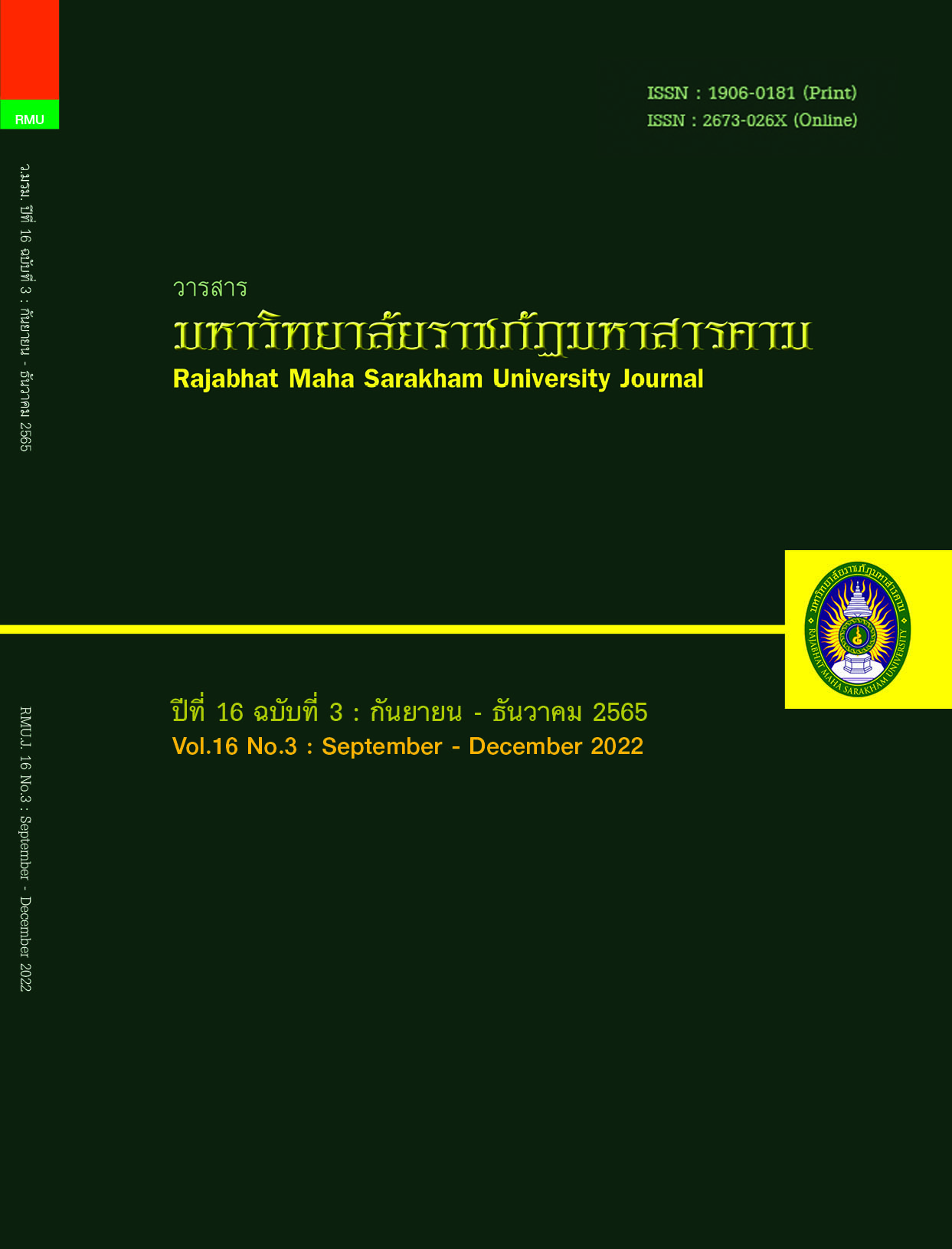การประเมินพหุปัญญา
Main Article Content
บทคัดย่อ
บทความนี้มีจุดประสงค์เพื่อ นำเสนอแนวคิดและหลักการในการประเมินพหุปัญญา โดยเนื้อหาที่นำเสนอในบทความมาจากการศึกษาทบทวนวรรณกรรม จากเอกสารทางวิชาการที่เกี่ยวข้องกับการประเมินชั้นเรียน พหุปัญญาและการประเมินพหุปัญญา โดยมุ่งหวังว่าจะเป็นประโยชน์สำหรับครูผู้สอนที่จะนำองค์ความรู้เกี่ยวกับแนวคิดทฤษฎีพหุปัญญาของการ์ดเนอร์ไปปรับใช้ในการจัดการเรียนการสอนอย่างเป็นรูปธรรม ในตอนต้นบทความจะนำเสนอเนื้อหาเกี่ยวกับการประเมินชั้นเรียน ในตอนกลางของบทความจะนำเสนอเนื้อหาเกี่ยวกับแนวคิดพหุปัญญา การประเมินพหุปัญญาและตัวอย่างของการประเมินเพื่อให้เห็นภาพชัดเจนมากขึ้น และในตอนท้ายของบทความได้ชี้ให้เห็นถึงประโยชน์ ความสำคัญและข้อควรพิจารณาในการนำไปใช้ในชั้นเรียน
Article Details

อนุญาตภายใต้เงื่อนไข Creative Commons Attribution-NonCommercial-NoDerivatives 4.0 International License.
1. บทความที่ลงตีพิมพ์ทุกเรื่องได้รับการตรวจทางวิชาการโดยผู้ประเมินอิสระ ผู้ทรงคุณวุฒิ (Peer Review) สาขาที่เกี่ยวข้อง อย่างน้อย 3 ท่าน ในรูปแบบ Double blind review
2. ข้อคิดเห็นใด ๆ ของบทความที่ลงตีพิมพ์ในวารสารมหาวิทยาลัยราชภัฏมหาสารคาม นี้เป็นของผู้เขียน คณะผู้จัดทำวารสารไม่จำเป็นต้องเห็นด้วย
3. กองบรรณาธิการวารสารมหาวิทยาลัยราชภัฏมหาสารคาม ไม่สงวนสิทธิ์การคัดลอกแต่ให้อ้างอิงแสดงที่มา
เอกสารอ้างอิง
Andrade, H. L., & Heritage, M. (2017). Using Formative Assessment to Enhance Learning, Achievement, and Academic Self-Regulation. New York. Routledge, Taylor & Francis Group.
Armstrong, T. (2009). Multiple Intelligences in the Classroom, 3rd Edition. New York. Virginia. Thomas Armstrong.
Bartlett, J. (2015). Outstanding Assessment for Learning in the Classroom. New York. Routledge, Taylor & Francis Group.
Baum, S., Viens, J., & Slatin, B. (2005). Multiple Intelligences in the Elementary Classroom A Teachers Toolkit. New York. Teachers College, Columbia University.
Chappuis, J., & et al. (2014). Classroom assessment for student learning. Second Edition. Essex England. Pearson.
Chomeya, R. (2010). Glossary of Behavioral Terms. Mahasarakham. Mahasarakham University Press.
Chomeya, R. (2021). Behavioral Sciences. Mahasarakham. Aphichat Printing Ltd.
Darling-Hammond, L. (2014). Next Generation Assessment Moving Beyond the Bubble Test to Support 21st Century Learning. California. Jossey-Bass.
Fleetham, M. (2006). Multiple Intelligences in Practice enhancing self-esteem and learning in the classroom. Stafford. Network Continuum Education.
Gardner, H. (2011). Frames of Mind The Theory of Multiple Intelligences. New York. Basic Books.
Gardner, H., & Hatch, T. (1989). Educational Implications of the Theory of Multiple Intelligences. Research Article. https://doi.org/10.3102/ 0013189X018008004
Hunt, E. (2010). Human Intelligence. New York. Cambridge University Press.
Jamaris, M., & Edwita. (2014). Formal Multiple Intelligences Assessment Instruments for 4-6 Years Old Children. American Journal of Educational Research, vol. 2, no. 12, pp. 1164-1174. doi: 10.12691/ education-2-12-6
Jiang, H., & Hill, M. F. (2018). Teacher Learning with Classroom Assessment. New York. Springer Singapore.
McMillan, J. H. (2017). Classroom Assessment Principles and Practice That Enhance Student Learning and Motivation. New York. Pearson.
Pearsall, G. (2018). Fast and effective assessment how to reduce your workload and improve student learning. Virginia. ASCD.
Scott, D. (2015). New Perspectives on Curriculum, Learning and Assessment. New York. Springer International Publishing.
Shearer, B. C. (2002). Using a Multiple Intelligences Assessment To Facilitate Teacher Development. Educational Resource Information Center (ERIC), ED 463 323. pp. 1-28.
Tirri, K., & Nokelainen, P. (2011). Measuring Multiple Intelligences and Moral Sensitivities in Education. Boston. Sense Publishers.
Xie, J. C. & Lin, R. L. (2009). Research on Multiple Intelligences Teaching and Assessment. Asian Journal of Management and Humanity Sciences, Vol. 4, No. 2-3, pp. 106-124.


